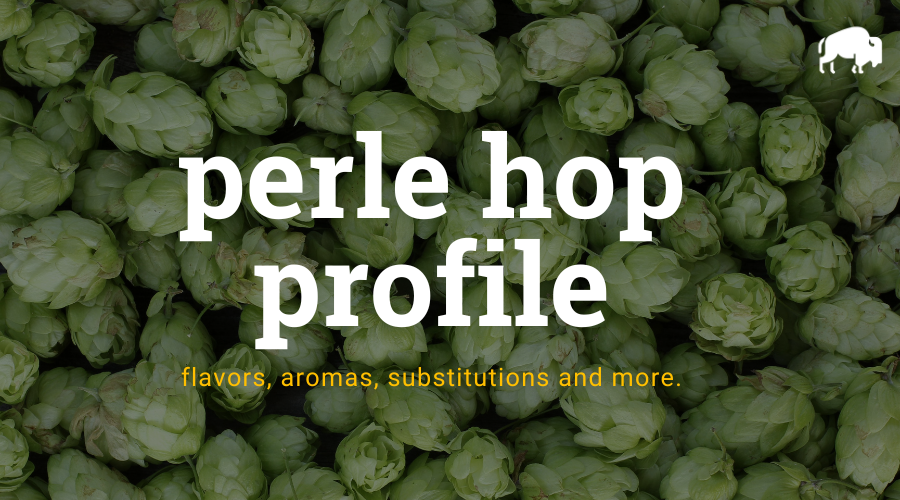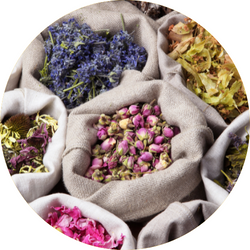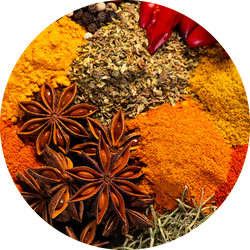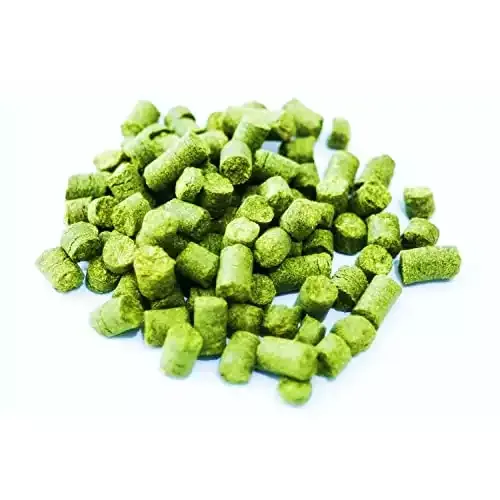
Perle hops are a German hop variety developed in the Hop Research Center Hüll as a disease-resistant alternative to the noble hop Hallertauer Mittelfrüh. It is a well-rounded hop with good alpha acids and pleasant oils, offering aromas of herbs and spices sought after in German breeds.
Perle is widely used in commercial brewing of many beer styles, including Lagers and other sessionable styles, and has a high resistance to disease, high yields, and a stable oil profile. Perle’s delicacy and brightness make it suitable for clean European lagers, cold-fermented ales, and the yeast character of many Belgian beers. Perle can be used as an aroma hop, but in excellent years, it can also have high enough alpha content for bittering.
| Usage: | Dual-Purpose |
| Country of Origin: | United States |
| Hop Growers Code: | PER 66/13/13 |
Where To Buy Perle Hops
Perle Flavor And Aroma
Perle is a dual-purpose hop that is often described to have the following aroma characteristics:

herbal

floral

spicy
Perle Hop Oil Breakdown
Hop oils can vary from year to year and farm to farm but based on our research, here are the typical values we have seen reported. This information comes from various hop farms, The Hop Aroma Compendium, and For The Love Of Hops.
| Alpha Acid % (AA) Alpha acids are what is isomerized when boiling to create bitterness in beer. | 6% – 10% |
| Beta Acid % Beta acids are what give hops their more aroma and flavor compounds. | 3% – 5% |
| Alpha-Beta Ratio This ratio of alpha acids to beta acids determines how quickly bitterness fades during aging. Lower ratios are common for aromatic varieties. | 1:1 – 4:1 |
| Co-Humulone as a % of Alpha Higher numbers are said to impart a harsher bitterness. | 27% – 32% |
| Total Oils (mL/100g) With more total oils, typically comes a more complex hop profile but these are highly volatile compounds. | 0.7mL – 1.2mL |
| Myrcene green, resinous | 45% – 55% |
| Humulene woody, piney | 28% – 33% |
| Caryophyllene woody | 10% – 12% |
| Farnesene floral | 0% – 1% |
| Other Oils: Includes beta-ionine, beta-pinene, limonene, linalool, geranoil & selinene | 4% – 30% |
| Hop Storage Index (HSI) The HSI indicates the percent of alpha and beta acids lost after 6 months of storage at room temperature (68°F or 20°C). | Retains 80%-85% alpha acid after 6 months storage at 20ºC (68ºF). |
| Hop Storage Index (HSI) Rating | Great |
Perle Hop Substitutions
Replacing one hop for another is seldom straightforward but sometimes you don’t have the right hop or the right quantity of hops for the beer you want to make. For those situations, we have made a comprehensive list of hops to substitute on brew day.
These substitutions aren’t perfect as hop chemistry is pretty complex.
We wanted to make this list of substitutions with varietals that are easy to find when possible. For Perle, we recommend substituting with the following hops:
Beer Styles
For the most part, any hop could have a place in just about any beer style. Based on popular beers, historical usage, and our own preferences, we would recommend using Perle for IPA, New England IPA, Pale Ale, Wheat Beer, Golden Ale. That being said, experiment and see what works best for you.
References
https://www.hopslist.com/
https://www.ars.usda.gov/
https://www.brewersassociation.org/
https://www.barthhaasx.com/
https://www.yakimachief.com/
Hieronymus, Stan. For The Love of Hops. Brewers Publications, 2012
The Hop Aroma Compendium. 2012


